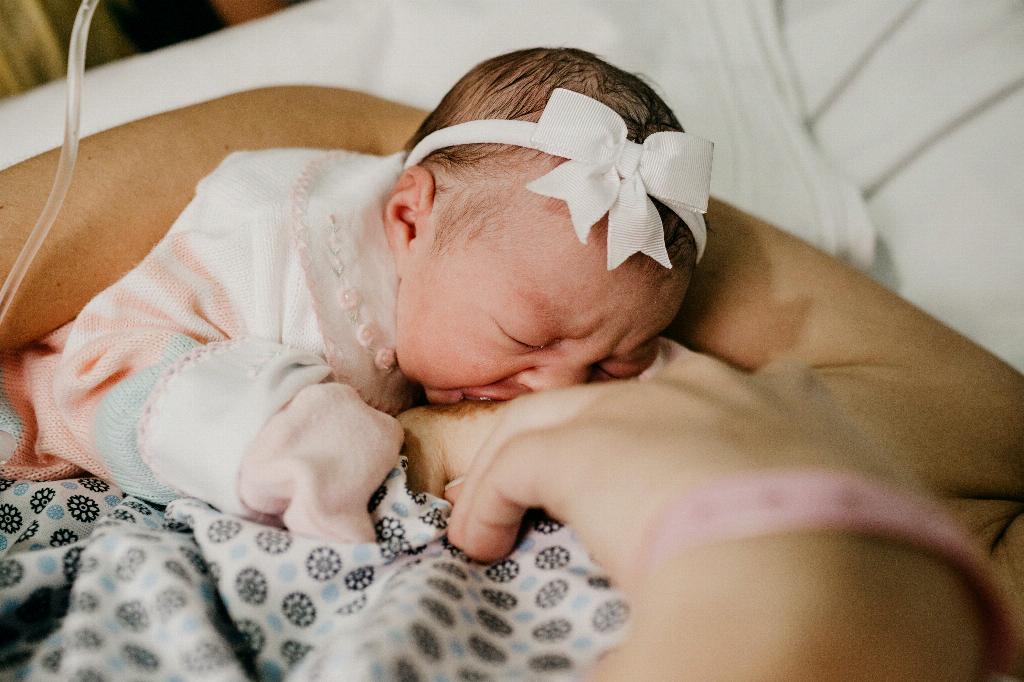When it comes to breastfeeding, achieving a deep latch is crucial for a successful and comfortable nursing experience for both you and your baby. A deep latch ensures that your baby is effectively extracting milk and can help prevent issues such as nipple pain and inadequate milk transfer. Let’s explore some tips on how you can help your baby latch more deeply:
1. Positioning
Proper positioning is key to helping your baby achieve a deep latch. Ensure that your baby’s body is tucked in close to yours, with their ear, shoulder, and hip in alignment. This alignment can encourage a better latch and prevent your baby from straining to reach the breast.
2. Breast Support
Using a nursing pillow or rolled-up blanket for support can help elevate your baby to the level of your breast, making it easier for them to latch deeply. Supporting your breast with a free hand can also aid in aligning your nipple with your baby’s mouth.
3. Breast Compression
Gently pressing on the top side of your breast near the areola can help shape the breast for a deeper latch. This technique can also encourage your baby’s chin to make contact with the breast first, leading to a more effective latch.
4. Chin Placement
Ensuring that your baby’s chin is nestled or touching your breast first can promote a wider latch and help prevent shallow sucking. You can gently guide your baby’s chin underneath the breast to encourage a deeper latch.
5. Nose-to-Nipple Alignment
Positioning your baby with their nose directly across from your nipple can encourage them to open wide and latch deeply. This alignment can help your baby take in more breast tissue, leading to a more comfortable and efficient feed.
6. Stay Relaxed
Staying relaxed during the latching process can help your baby sense your calmness and make it easier for them to latch deeply. Take deep breaths and find a comfortable position to promote a successful latch.
7. Seek Support
If you are experiencing difficulties with achieving a deep latch, don’t hesitate to seek help from a lactation consultant or a healthcare provider. They can provide guidance, support, and tips tailored to your specific needs.
8. Check for Signs of a Good Latch
After your baby latches, check for signs of a good latch, such as their lips flanged out like fish lips, a subtle smacking noise during sucking, and rhythmic jaw movements. These indicators can signal that your baby is latched deeply and effectively.
9. Experiment with Different Positions
Exploring different breastfeeding positions, such as the football hold, side-lying position, or cross-cradle hold, can help you find a comfortable and effective way for your baby to latch deeply. Don’t hesitate to try out various positions to see what works best for you and your baby.
10. Stay Patient
Remember that achieving a deep latch may take time and practice. Be patient with yourself and your baby as you navigate the breastfeeding journey together. Celebrate small successes along the way and seek support when needed.
11. Avoid Forceful Latching
Avoid forcing your baby to latch deeply by pushing their head towards your breast. Instead, gently guide them and allow them to adjust their position naturally. Forced latching can lead to discomfort for both you and your baby.
12. Practice Skin-to-Skin Contact
Skin-to-skin contact can help your baby feel secure and calm, making it easier for them to latch deeply. Take advantage of this intimate bonding time to promote a positive breastfeeding experience and encourage a strong latch.

